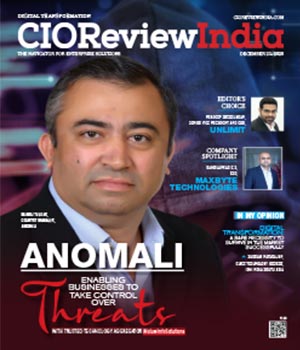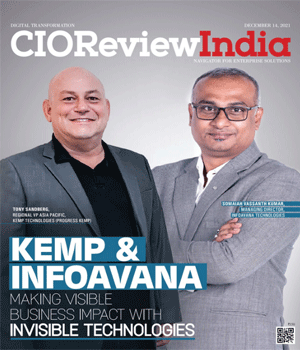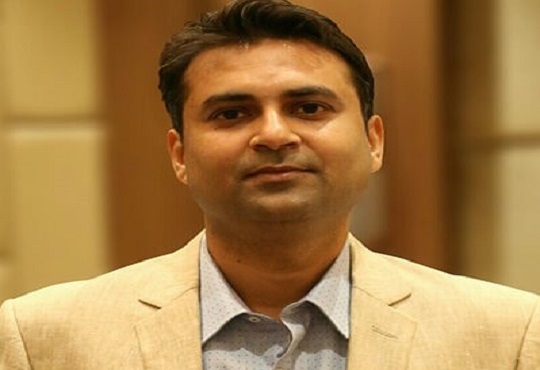
Mid-tier companies propelling ahead of large enterprises
Roop Singh, Chief Business Officer, Birlasoft | Wednesday, 24 February 2021, 10:54 IST
 As the world struggles to find its way through one of the worst pandemics in the history of mankind, it is estimated that the global economy will shrink by over 4.4% in 2020 (IMF). Businesses are looking at reducing outlay and maximizing return on investment that they have already undertaken – millions of dollars – in their existing core platforms. At this time, they are looking for a partner that can protect their investments while providing cultural and change management support to enable business continuity and, at the same time, bring in innovation and integrating emerging technologies.
As the world struggles to find its way through one of the worst pandemics in the history of mankind, it is estimated that the global economy will shrink by over 4.4% in 2020 (IMF). Businesses are looking at reducing outlay and maximizing return on investment that they have already undertaken – millions of dollars – in their existing core platforms. At this time, they are looking for a partner that can protect their investments while providing cultural and change management support to enable business continuity and, at the same time, bring in innovation and integrating emerging technologies.
Where, conventionally, this role was essayed by large service providers, consequent to the pandemic, the mantle of partner of choice seems to have shifted to the mid-tier players. A recent industry report by Industry ARC accentuates this fact while disclosing that the global IT services market is expected to reach $1123.57 billion by 2025.
A large part of this growth will be driven by the deals and contracts won by mid-tier firms. So, what is it that the mid-tier players bring to the table that is turning the tide their way?
Change Drivers
Rapid decision-making, ability to align with customer’s organizational priorities, and pivot to the market dynamics seem to be some of the factors propelling mid-tier firms ahead of the large enterprises. Additionally, these firms are demonstrating strong leadership and flexibility in their engagement models, and attention to detail, with the management of the mid-tier player more accessible and closely involved in the various stages of the project. This is appreciated by the customers looking for higher intimacy through a partnership engagement model, rather than supplier relationship.
The deal clincher seems to be not monetary considerations but the ability of the mid-tier firms to deliver management focus and flexibility in the face of changing environment, making them more suited to partner enterprises in times of crisis.
This shift in preference, from large players to the mid-tier ones, can be encapsulated by a simple example: in case a large company wants to change a Managed Services Agreement (MSA), the process can take as long as a couple of weeks going through finance, legal and other departments. However, in case of a mid-tier firm, the change can be accomplished in less than a day. Today, the customers are looking to enter into quick, short deals, instead of long-drawn out multi-year relationships that take many months to set up. There is a growing need to simply get the work done, in the shortest duration, get quantifiable ROI, instead of getting entangled in complex and red-tapism that goes with large players.
A part of this mindset has been brought about the need to adapt to the new models of working, where that clients are not just looking at how fast or nimbly you adapt your own organization to the new normal, but the pace and manner in which you can help their business. It is no longer ‘your ability to execute’, it is more about ‘your ability to execute based on my need to consume the service’. The earlier approach of engaging with client was based on the requirement they had given you and your tailoring them as you go along. However, today the conversation is more consumer focused, and how you can service the customer in a more staggered and flexible way that will really enable customer to gain maximum advantage from the engagement. It really also boils down to weaving in processes, culture, policies, people expectations and so on…
On-the-go Education
Given the pace of change we are seeing in the technologies domain and how customers are adopting them, service providers need to drive a clear growth agenda. This can be achieved through continuous learning, which equals continuous improvement. It is a known fact that learning on-the-go can directly impact business delivery. The inability to leverage changes in the technology can impact customer experience, which is detrimental for current and future growth agenda. Therefore, nimbleness is a key aspect of on-the go education, a fact that the mid-tier firms seem to have internalized well and are able to demonstrate successfully. User experience in deployments is a case in point driving home the need for on-the-go education, as the experience of education is becoming synonymous with the milestones against which you are delivering the project.
Talent Management
Talent management is a business and HR imperative as organizations face capability and leadership challenges worldwide. Technology, globalization, and employment regulations, in addition to the pandemic-induced distancing, are reshaping the way people work, learn, collaborate, and lead.
A fresh approach and HR strategy is the need of the hour, to attract and keep critical talent in an increasingly demand-driven talent market. Thus, mid-tier IT services companies are looking several facets on retention and leadership enablement for a clear focus on talent management strategy. On one hand, they are increasingly focused on hiring top executives from larger players in order to scale up faster. On the other hand, they are aggressively re-skilling and bringing in an element of multi-skill enablement to upskill existing employees on processes and new age technologies.
To Sum It Up
Today, flexibility and agility are the imperatives for organizations to transition into the new normal. And in this, technology adoption across processes, big and small, is the key driver, with clients wanting quick and effective digital transformations to stay resilient. Consequently, mid-tier firms are emerging as a force to reckon with due to their ability to scale their offerings in remote setups, deal with critical situations at short notice, really see and hear their clients’ needs and engage effectively and learn-on-the-go.
This is also corroborated by the fact that the leading analyst firms are now exploring and rating mid-tier companies for their capabilities in marquee reports, as well as the fact that a lot of acquisitions that the large firms are undertaking at present time are of mid-tier firms, thus giving the larger players agility on the front end.
CIO Viewpoint
The Constantly Evolving Technology Landscape in...
By Janifha Evangeline
Navigating the Digitalization of Mining Industry
By Janifha Evangeline
How To Achieve An Effective Digital Transformation
By Yogendra Singh, Head-IT/SAP, Barista Coffee Company Limited
CXO Insights
No-code platforms: Enterprise-wide Adoption...
By Rahul Murthi, Director at Acies
Unleashing the Potential of IT in Engineering...
By Gyan Pandey, Head - Digital/CDO, Voltas
Low Code and Artificial Intelligence - The...


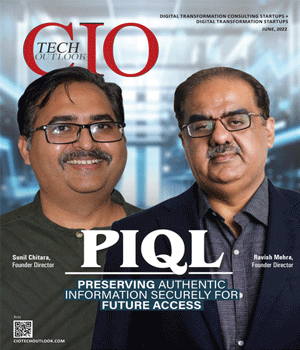
.jpg)
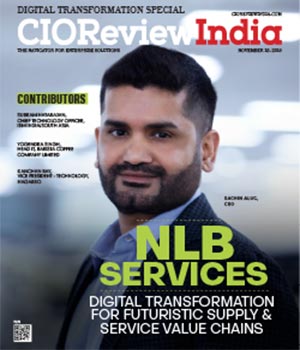
.jpg)
